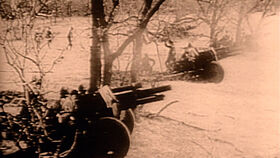Memory Alpha is a collaborative project to create the most definitive, accurate, and accessible encyclopedia and reference for everything related to Star Trek. The English-language Memory Alpha started in November 2003, and currently consists of 56,587 articles. If this is your first visit, please read an introduction to Memory Alpha.
| Warning: Memory Alpha contains spoilers! |
|---|
| Star Trek: Lower Decks
|
| Star Trek: Strange New Worlds |
| Star Trek: Prodigy |
| Star Trek: Discovery |
| Upcoming productions: Star Trek: Starfleet Academy • Star Trek: Section 31 |
| Where to watch: Paramount+ (US and Canada) • Amazon Prime/Netflix/Pluto TV (elsewhere worldwide) |
Interactive timeline
Latest news
- 3 November 2023
- Star Trek: Prodigy has been nominated for a Children's and Family Emmy Award in the category of "Sound Mixing and Sound Editing For An Animated Program". [1]
- Prolific televsion director Robert Butler, who helmed the first Star Trek: The Original Series pilot, "The Cage" has passed away at the age of 95. [2]
- 1 November 2023
- Actor Peter White, who appeared as Sharat in the Star Trek: Deep Space Nine episode "Armageddon Game" has passed away at the age of 86. [3]
Featured article

The eleven-foot model
During the production of the Star Trek television shows, most notably Star Trek: The Original Series, numerous studio models were created representing the Constitution-class, in particular the USS Enterprise, more than for any other class of starship. Starting out with traditional physical studio models, advances in technology have resulted in digital versions that were added to the array of models used in the Star Trek franchise.
As art director on the original series, Matt Jefferies was given the assignment to design the Enterprise itself. His only guideline was Gene Roddenberry's firm list of what he did not want to see: any rockets, jets, or fire-streams. The starship was not to look like a classic, and thus dated, science-fiction rocket ship, but neither could it resemble anything that would too quickly date the design. Somewhere between the cartoons of the past and the reality of the present, Matt Jefferies was tasked with presenting a futuristic design of his own.
The theory that space could be warped – a hypothetical means of faster-than-light travel – had first been proposed by Albert Einstein in 1905. Years later, Star Trek itself would establish that Zefram Cochrane had first demonstrated warp drive in 2063. In the 1960s, however, warp drive – a delicately balanced, intricate web of chemistry, physics, mathematics, and mystery – initially perplexed Matt Jefferies.Memory Alpha portals
Picture of the Day
| Veterans Day – honoring those who served. |
|---|
 Artillery from World War I. |
| Artillery from World War I. (ENT: "In a Mirror, Darkly") |
Editing Memory Alpha
The Star Trek trademarks, logos, and related names are owned by CBS Studios Inc., and are used under "fair use" guidelines.
The user-created content of this site is released under the Creative Commons "Attribution-NonCommercial" license version 4.0. See Memory Alpha: Copyrights for more information.


